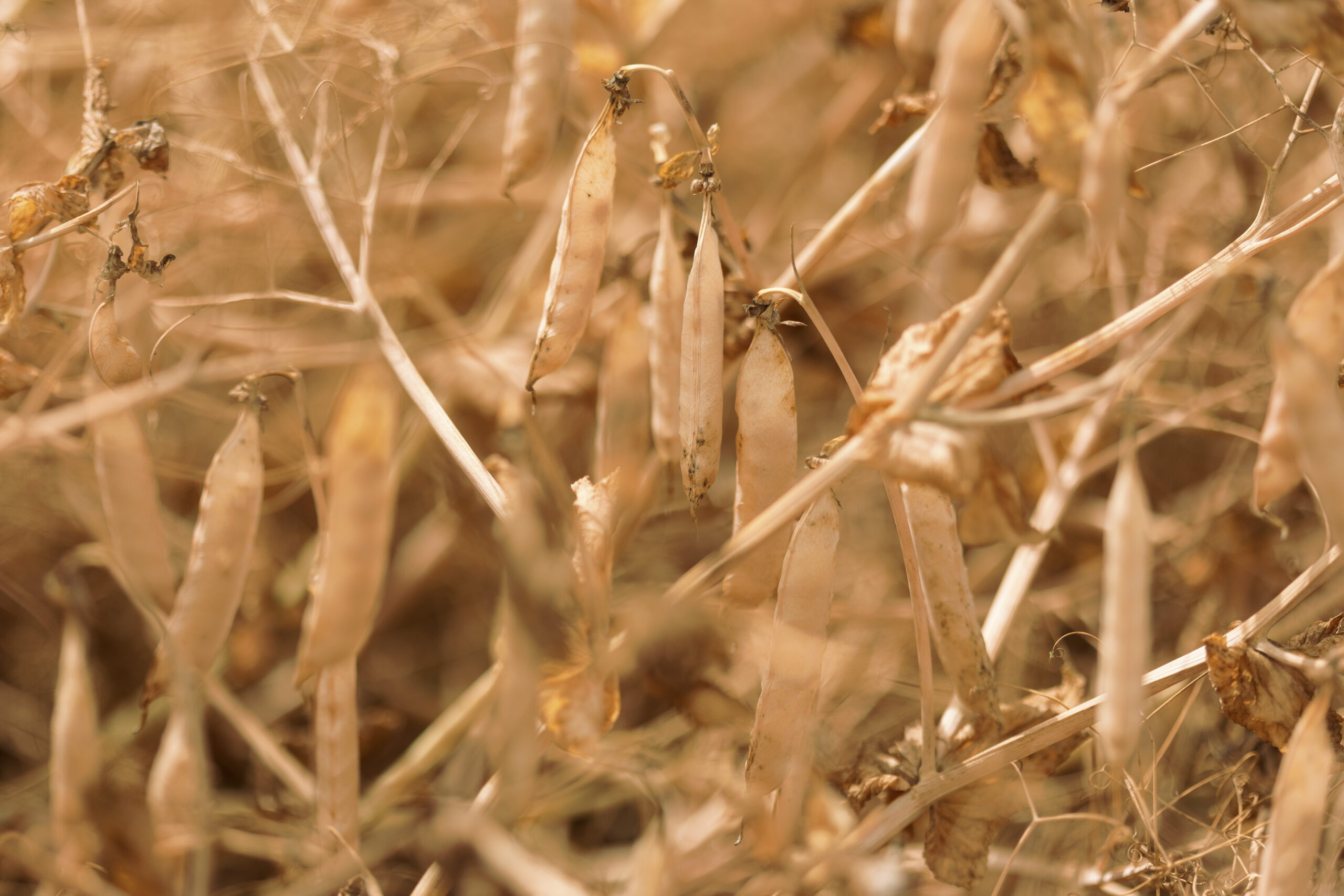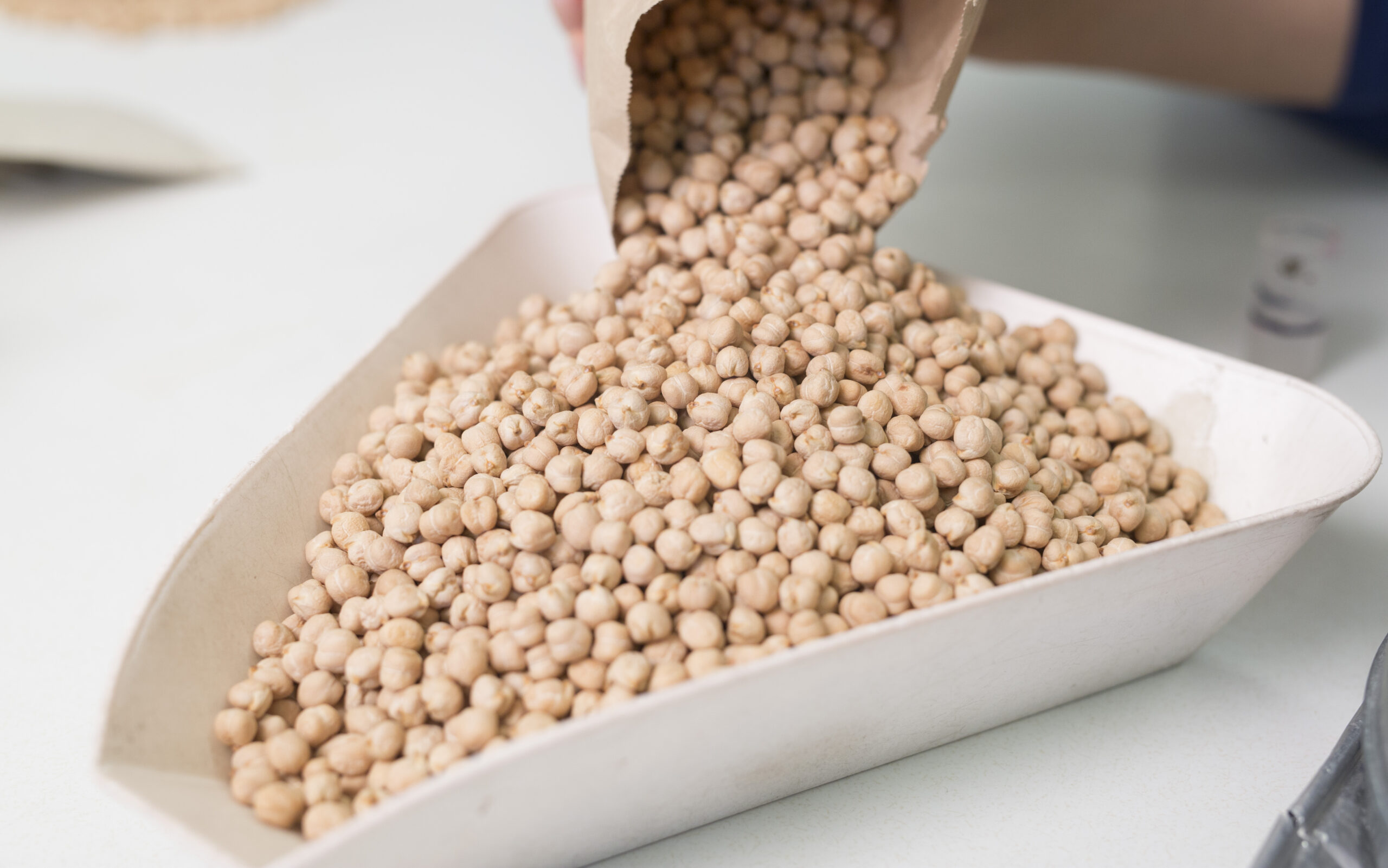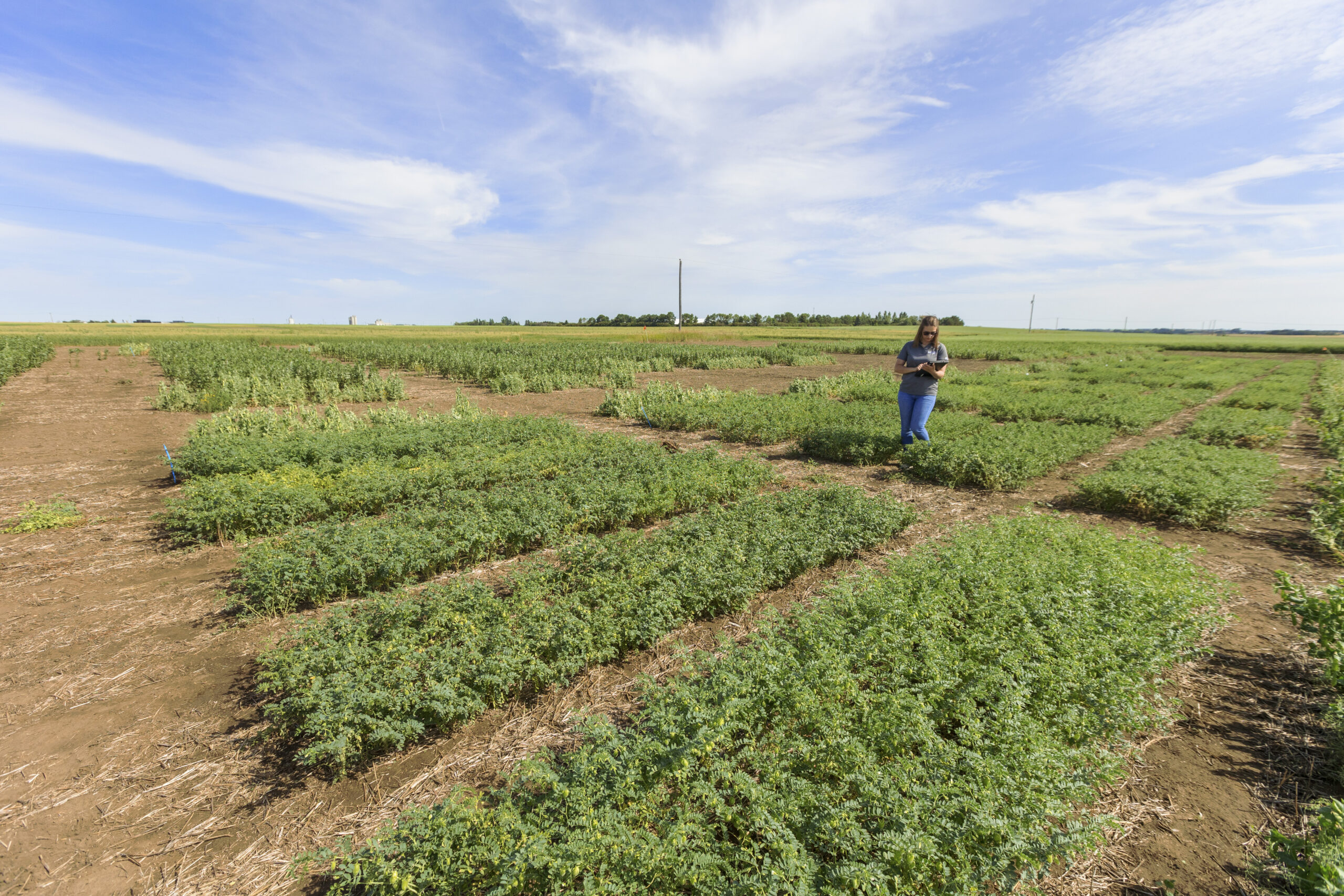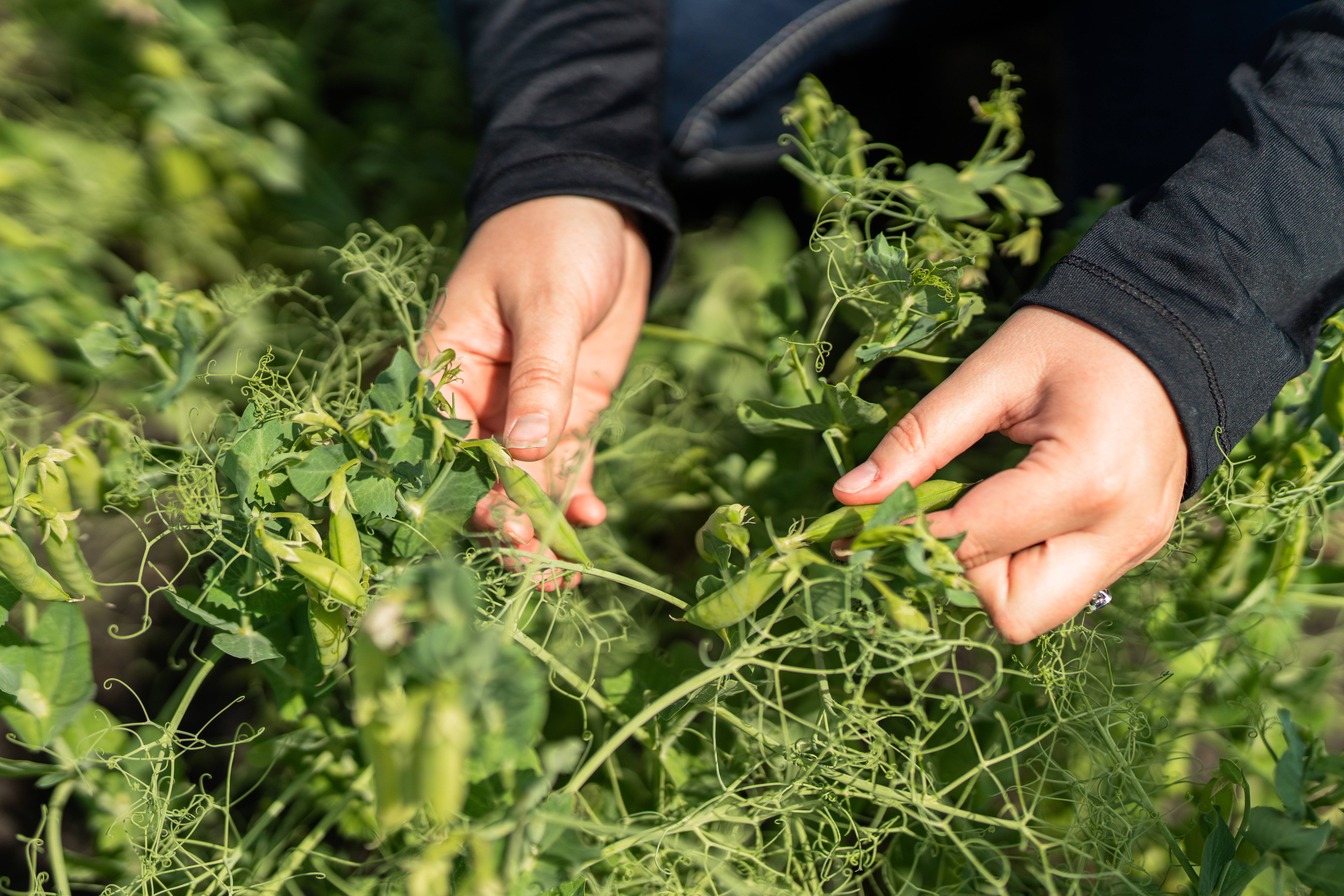By Bruce Barker, P.Ag.
Growers considering pea production have two major considerations when it comes to deciding what variety to grow. Knowing what class of pea is suitable for an area and the ability to produce the desired quality for the target market is the first step. The next step is choosing a variety within a class, based on a number of agronomic considerations such as days to maturity, disease resistance, herbicide options, and yield potential.
Yellow peas are the most widely grown peas in Saskatchewan, followed by green peas, and then specialty types such as dun, maple, marrowfat, and forage peas. Varieties are suitable for human consumption or livestock feed markets. Nearly all varieties have a semi-leafless leaf type with tendrils instead of leaflets, which helps provide better standability and reduces disease pressure.
Yellow Peas
This is the predominant market class in Western Canada with approximately 75% of the production. The largest buyers are China (for protein extraction and vermicelli noodle production), the Indian sub-continent (for human consumption such as dal), and North America (for fractionation).
Fractionation specifically for protein as a food ingredient is a rapidly growing market in North America. Yellow peas are also sold into the livestock feed markets.
Yellow peas do not bleach in the field, so they can withstand delayed harvest better than some other market classes such as green peas. Growers often select yellow peas as harvest timing is less critical.
Green Peas
Green peas have approximately 15-20% of Canadian production. Several countries are importing green peas for human consumption including the Indian sub-continent and several South and Central American countries. They are also used as livestock feed.
Green peas can bleach in the field with delayed harvests, which will downgrade the quality. Quality is more demanding than in yellow peas. Growers typically seed green peas first so that they can harvest them in a timely manner to reduce bleaching. They also typically take off the crop at 17-18% moisture and artificially dry the crop to help ensure top quality.
Dun Peas
Dun peas have purple flowers, pigmented seed coats, and yellow cotyledons. They are dehulled and sold as whole peas in human consumption markets similar to yellow pea varieties. The pigmented seed coats provide natural protection to various root rot diseases (such as Fusarium avenaceum), which aids in establishment and makes them attractive to growers in higher risk areas.
Dun peas have very good agronomic traits and, generally, quality concerns are not common.
Maple Peas
Maple peas have purple flowers, pigmented seed coats with a mottled pattern, and yellow cotyledons. They are a specialty type sold as whole seeds mixed with millets and other seeds into domestic bird seed markets (pigeon feed) internationally. They can also be exported to the far-east for inclusion in fruit salad. The pigmented seed coats provide natural protection to various root rot diseases (such as Fusarium avenaceum), which aids in establishment and makes them attractive to growers in higher risk areas. Maple peas tend to yield less than yellow peas, therefore premiums are often offered to offset lower yields.
Marrowfat Peas
Marrowfat peas are a blocky, very large-seeded specialty type of pea with green cotyledons. They have high starch content and are used in specialty food markets such as mushy peas in the United Kingdom and roasted snacks in Asia. They have white flowers and non- pigmented seed coats. The class is grown under contract with little information available on varieties. Marrowfat peas are bred at Agriculture and Agri-Food Canada Lacombe. Rudy Agro at Outlook, Saskatchewan contracts marrowfat pea production using varieties from Limagrain in Holland.
Forage Peas
Forage peas are smaller seeded peas that are grown for biomass, typically in mixture with forage cereals, for use as hay or silage. Typically they can produce an average of four to five tonnes per acre of forage dry matter, similar to that of forage barley, but with greater protein concentration.
Red Peas
Red peas have red cotyledons (inside of the seed). Market development is still underway. These are also classified as orange peas by the Canadian Grain Commission.

Austrian Winter Peas
Austrian winter peas are a specialty type that have pigmented seed coats with a mottled pattern, and yellow cotyledons. Their small seeds are ideal for plow-downs or cover crops in organic systems, as well as use for bird seed, sprouting markets, and wildlife feed (deer). They are winter grown in other parts of the world but are spring sown in Saskatchewan and they are expected to yield lower than traditional spring varieties. Varieties of Austrian winter peas have not been tested through the Regional Variety trials in Saskatchewan so little is known about their characteristics, including maturity or susceptibility to diseases and lodging, compared to other known classes of peas. Hick Seeds at Mossbank, Saskatchewan markets Austrian Winter peas.
Variety Selection
Market class selection intersects with variety selection. Use market preferences and varietal performance data to help inform your decision.
Market: Identify your target market and make sure the variety selected matches the specifications and quality expected by your buyers, such as seed size, colour, functionality, and other attributes.
Yellow peas are widely purchased by grain buyers which is cost effective for grain delivery. Other classes are usually processed by more specialized buyers, requiring close access to facilities to reduce trucking costs.
For niche market classes, talk to the grain buyer to understand the size of the market, contract terms, preferred varieties, and market options if the peas do not meet quality standards.
Maturity: Identify realistic expectations on maturity needed to achieve optimum yield and quality in your region. Selecting varieties based on maturity can also be important when it is desirable to space out harvest operations and to help preserve seed quality with early maturing varieties. Some market classes, like forage and dun peas, are relatively late maturing. An extra 1-2 weeks can make a large difference in quality.
Disease Resistance: Select varieties with better disease resistance for high risk areas or fields. Resistance is a tool that helps with disease management, but may or may not reduce the reliance on fungicide applications. Currently all varieties of field peas are susceptible to Aphanomyces euteiches but differ in susceptibility to Fusarium. All varieties of peas listed in the SaskSeed Guide are also powdery mildew resistant.
Seed Size: If seed size does not affect the market choice, then consider the seeding costs of the variety. Smaller seeded varieties are usually cheaper to seed and have fewer production issues with plugging seeding equipment and other operations. Seed size varies by variety and differences can be found between lots of the same variety due to differences in environment or agronomic practices.
Crop Growth Habit and Other Physiological Factors: Factors such as plant height, vine length, and standability are also important and can have implications for harvest management. Plant height can influence lodging however factors such as vine length and stem strength can infer lodging tolerance despite taller plant stature.
Seed Coat Breakage: Seed coat breakage ratings are based on an abrasive test. This rating is a test of durability of the seed coat and is not a measure of seed coat thickness. Varieties that are more susceptible to seed coat breakage may need extra care during handling and at harvest to minimize mechanical damage. Often larger seeded varieties are more prone to seed coat breakage.
Greenness in Yellow Peas: Yellow peas are visually rated for green colouring after harvest and are expressed as a percentage of the seeds in a sample that have obvious green tinge to the whole seed. The green colouring may be contained within the seed coat and/or cotyledons. The impact of greenness is visual and does not affect germination but could affect grade.
Seed Coat Dimpling: Refers to tiny depressions that give the seed a golfball-like appearance. It appears to be more prevalent when cool temperatures occur during seed fill. Buyers prefer a smooth surface to peas and grading may be impacted if dimpling is identified. Shrivelled seed is a grading factor under the Canadian Grain Commission and includes seeds that have a severely dimpled surface.
Bleaching in Green Peas: Green peas are recognized and marketed for their uniform green cotyledon colour. The main pigment responsible for the green colour is chlorophyll. Under certain conditions the chlorophyll is degraded by enzymes which results in a lightening of the green colour which is considered bleaching. Under complete degradation of the chlorophyll, the seed becomes yellow. Growers can minimize bleaching by choosing varieties that have better tolerance to bleaching as well as ensuring the crop can be harvested early and efficiently prior to exposure to adverse conditions late in the season. Bleaching is a high priority with most green pea breeders.
Lodging: Harvest management of peas is an ongoing issue. There are differences in the tolerance to lodging among varieties that should be considered. Lodging is usually rated on a 1-9 scale with 1 = upright and 9 = flat on the ground at the time of maturity. Varieties have been developed with improved lodging ratings but environmental conditions can influence the actual lodging that occurs. High yields, heavy winds and/or rains, and disease in the lower canopy can increase the risk of lodging.
Protein: The interest in plant-based proteins means buyers may be looking for peas with higher protein. Genetics and environment are the biggest influencers on the level of protein found in pea seed. As pea fractionation plants come into production, there may be preferences for varieties. Know what varieties are being preferred if fractionation is your target market.
Yield: This is often the highest priority as it directly relates to the ultimate goal of net returns. However, other performance improvements such as disease resistance or quality attributes may be just as important for achieving that goal. In some cases the advantages and higher performance of new varieties may not necessarily translate into higher yields as a result of environment or management practice. If all other factors have been considered, then yield potential can be used as the deciding factor.
Where to Find Information
Variety information for all market classes of field peas is available from several sources. The Government of Saskatchewan’s Varieties of Grain Crops, which is included in the Saskatchewan Seed Growers Association’s Sask Seed Guide, is published each winter and has information, ratings, and long term yields on each variety. Individual year or site data for regional variety trials are also available at saskpulse.com.
Saskatchewan Crop Insurance Corporation has Sask Management Plus (SMP) that provides access to actual crop production information to help make more informed farm management decisions. SMP can provide acres and yields of varieties by Risk Zone as well as provincial averages. This information can be done interactively by crop to access more detailed information, and can supplement regional variety trial information to see how a variety of interest performed in a select area.
Distributors of Field Pea Varieties in Saskatchewan
The main breeding institutions for field pea varieties available in Saskatchewan are the Crop Development Centre (CDC) at the University of Saskatchewan and Agriculture and Agri-Food Canada (AAFC) in Lacombe, Alberta. There are a few private companies such as Limagrain Nederland, Lantmanned SW Seed, and DL Seeds Inc. that also develop or bring in new pea varieties. Saskatchewan Pulse Growers (SPG) has the distribution rights to all pea varieties and classes developed at the CDC since 1997 except for marrowfat types. The new varieties are made available to Select Seed Growers in Saskatchewan who then multiply the seed for distribution and sale to commercial farmers. Therefore, in Saskatchewan, seed growers are the source of new CDC varieties of the main pea classes.
Pea varieties may also be sub-licensed to distributors on a variety or market class basis. Most varieties developed by AAFC, DL Seeds, Lantmannen SW Seeds, and Limagrain Nederland are marketed this way. With some specialty varieties or niche market classes, SPG has tendered these to organizations who can further the development of new markets. SPG has also sub-licensed marketing rights of many varieties to seed companies to handle distribution outside of Saskatchewan. The distributors of sub-licensed pea varieties are listed below and more information on individual varieties may be available on their website:
- SeCan
- Canterra Seeds
- FP Genetics
- Legume Logic
- SeedNet Inc.
- Wagon Wheel Seed Corp.
- Columbia Seeds
- Alliance Seed
Finding Seed
Seed can be found through several on-line resources:
- Saskatchewan Pulse Growers Select Seed Grower Directory
- Canadian Seed Growers Association (CSGA)
- The CSGA maintains an online seed directory to help seed buyers find seed supplies. Go to seedlocator.net to find Canadian pedigreed seed for sale.
- Sask Seed Guide published by the Saskatchewan Seed Growers Association
Buyers
Listing of grain buyers can be found with several online resources:
- Saskatchewan Pulse Growers Buyer/Seller Listing
- Canadian Special Crops Association
- Canadian Grain Commission Licensed Grain Companies
Published February 2020



